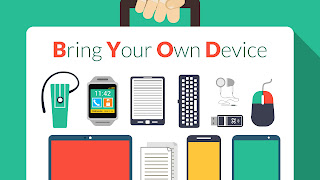Twitter Feed
Cloud Computing Wargames !!
Wikipedia “A wargame is a game that represents a military operation.” “Military simulations, also known informally as war games, are simulations in which theories of warfare can be tested and refined…
How the Government Tweets – An Update
Thanks goes out to Twitter_Tips for a link to Government agencies on Twitter: a few comprehensive sites posted by lindyjb which includes the following: The Government’s A-Twitter: A Comprehensive List…
How the Government Tweets
Last September in “Ambient Awareness. The cloud killer app? ” and ” The Cloud Wins in Minneapolis at the RNC! “, I wrote about how the cloud infrastructure and microblogging…
Bob Gourley on Cloud Computing and NetCentric Operations
Bob Gourley, Crucial Point CTO and former DIA CTO, just posted Cloud Computing and Net Centric Operations on his website CTOvision . In it he outlines how the OSD and ASD NII…
Obama Administration CTO Top Suggestions
Check out the top vote getters for suggestions to the nations’s first CTO! #5 with 5,835 votes Open Government Data (APIs, XML, RSS) We can unleash a wave of civic…
2009 Cloud Computing Events
2009 is off to a fast start with the following events on the horizon! February 2009 – “Bi-Annual On-line Government Cloud Computing Survey”, On-line February 3, 2009 – Open Group…
World Summit of Cloud Computing Virtual Site
The Israeli Association of Grid Technologies (IGT) has made its recent IGT 2008 World Summit of Cloud Computing available on-line. Speakers include: Day 1: Stevie Clifton, Co-Founder & CTO Animoto…
1105 Government Information Group does Cloud Computing
Mark your calendars for April 29, 2009 ! 1105 Government Information Group has announced that there will be a Cloud Computing Conference at the Ronald Reagan Building in Washington, DC.…
Sun Acquires Q-Layer
Yesterday, Sun Microsystems announced their acquisition of Q-layer. This Belgium based company automates the deployment and management of both public and private clouds. In the press release, David Douglas, SUN’s…
- Increased employee mobility (63%), satisfaction (56%) and productivity (55%) dominate as the top drivers of BYOD. These employee related drivers are considered more important than reduced costs (47%).
- Security (39%) and employee privacy (12%) are the biggest inhibitors of BYOD adoption.
- 20% of surveyed organizations have suffered a mobile security breach, primarily driven by malware and malicious WiFi.
- Security threats to BYOD impose heavy burdens on organizations’ IT resources (35%) and help desk workloads (27%).
- Despite increasing mobile security threats, data breaches and new regulations, only 30% of organizations are increasing security budgets for BYOD in the next 12 months and 37% have no plans to change their security budgets.
- 72% – Data leakage/loss
- 56% – Unauthorized access to company data and systems
- 54% – Downloading of unsafe apps or content
- 52% – Malware
- 50% – Lost or stolen devices
- 49% – Vulnerability exploitation
- 48% – Lack of control on endpoint security
- 39% – Infrequent software updates
- 38% – Compliance
1. Create your policy before procuring technology: To effectively use mobile device management (MDM) technology for employee owned devices Policy must precede technology. Also note that these policies will have broad corporate-wide implications for IT, HR, legal, and security.
- Mobile device management
- Application security assessments
- Application testing services
- Application source code security assessments; and
- Embedded device security.
This post was brought to you by IBM Global Technology Services. For more content like this, visit ITBizAdvisor.com.
( Thank you. If you enjoyed this article, get free updates by email or RSS – © Copyright Kevin L. Jackson 2017)
Cloud Computing
- CPUcoin Expands CPU/GPU Power Sharing with Cudo Ventures Enterprise Network Partnership
- CPUcoin Expands CPU/GPU Power Sharing with Cudo Ventures Enterprise Network Partnership
- Route1 Announces Q2 2019 Financial Results
- CPUcoin Expands CPU/GPU Power Sharing with Cudo Ventures Enterprise Network Partnership
- ChannelAdvisor to Present at the D.A. Davidson 18th Annual Technology Conference
Cybersecurity
- Route1 Announces Q2 2019 Financial Results
- FIRST US BANCSHARES, INC. DECLARES CASH DIVIDEND
- Business Continuity Management Planning Solution Market is Expected to Grow ~ US$ 1.6 Bn by the end of 2029 - PMR
- Atos delivers Quantum-Learning-as-a-Service to Xofia to enable artificial intelligence solutions
- New Ares IoT Botnet discovered on Android OS based Set-Top Boxes


